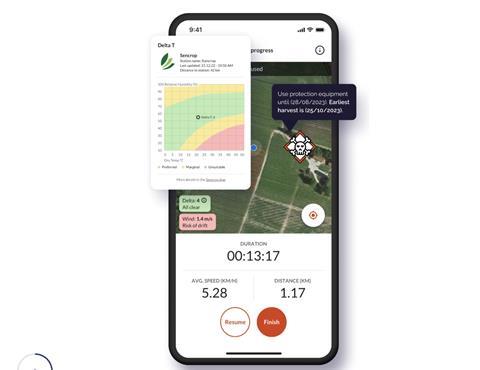Pilot is first step in delivering a fully integrated AI-driven platform to help drive better decisions
Farmable says the results of the first pilot to test its new AI-powered software management tool are “nothing short of mind-blowing”. The company partnered with 30 of its users to test the solution, which harnesses AI to analyse user-uploaded images, enriched with metadata from Farmable’s own databases.

“We’ve zeroed in on three key functions: crop variety identification, pest and disease detection, and yield prediction,” the company explained.
“Crop variety identification is all about verification. By analysing an image, the AI confirms that what’s growing in the field aligns with the user’s data for that plot. It’s a practical safeguard against human error and misuse, ensuring the system reflects reality.”
The second function, pest and disease identification, taps into historical observations, crop treatments from previous years, and regional knowledge databases to identify pests and diseases with what Farmable says is “remarkable precision”.
“A farmer might upload a photo of a wilting plant, and the AI could pinpoint a specific blight, drawing on years of local data to suggest actionable steps,” the company said.
Finally, yield prediction combined AI with imagery combined with historic yields, crop treatments, fertiliser plans, and plant health metrics to forecast yield. Farmable said it can predict yield “accurately enough to guide mid-season tweaks or harvest planning”.
“What makes this AI work isn’t just clever algorithms – it’s Farmable’s database, a digital twin of real-world farming operations,” the company said. “Our primary database comprises nearly 200 interconnected objects, each nested and linked to represent real farm dependencies. With the right queries, the AI can access a panoramic view of a farm’s organisation and execution – every field, every treatment, every harvest. This isn’t just data; it’s a near real time mirror of the farm.”
Without this structure, growers would have to rely on isolated spreadsheets, SQL databases, and disjointed insights.
“The digital twin approach ensures that AI doesn’t just see a single image – it understands the story behind it,” Farmable said. “For instance, identifying a pest isn’t just about the leaf in the photo; it’s about the crop’s history, the region’s pest patterns, and the farmer’s past interventions. That’s the difference between guesswork and intelligence.”
In the future, Farmable plans to expand AI’s reach across its ecosystem, from field to packhouse, to deliver a fully integrated platform to help drive better decisions.



